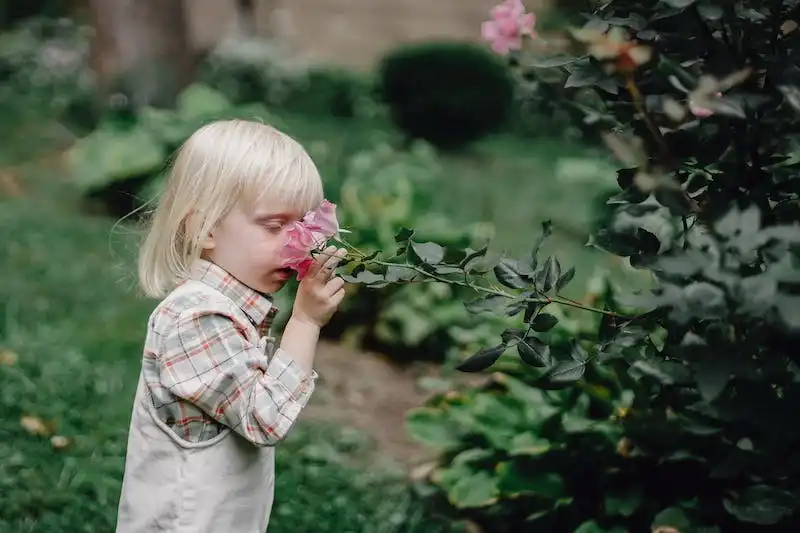The Hebe Society is a group of dedicated individuals who share a common love for the beauty and charm of hebes. These woody shrubs, also known as veronicas, are known for their vibrant flowers and stunning foliage. They are the perfect addition to any garden, adding a touch of summer magic to the landscape.
Pruning hebes is an essential part of their maintenance. Regular pruning helps to keep the plants in good shape and encourages healthy growth. Deadheading is another important task, as it removes spent flowers and promotes new blooming. By deadheading regularly, you can keep your hebes looking their best throughout the summer.
Hebes come in a wide range of varieties, each with its own unique characteristics. Some hebes are more vigorous and bushy, while others have a more compact, neat growth habit. Regardless of their growth habit, all hebes require regular pruning and dead-heading to maintain their shape and health.
If a hebe has been neglected and has become overgrown and straggly, a hard prune may be required to rejuvenate the plant. This involves cutting back the hebe to a few inches above ground level. Although this may seem drastic, it is often the best solution for older, worn-out hebes.
When it comes to fertilizing hebes, it is best to do so lightly. Hebes are not heavy feeders and excessive fertilizing can actually harm their growth. A light application of a balanced fertilizer in early spring is usually sufficient to provide the necessary nutrients for healthy growth.
In order to promote the best flowering, hebes should be planted in a location that receives full sun. They can tolerate some shade, but full sun is ideal for producing a profusion of flowers. Hebes are also quite hardy and can tolerate a wide range of soil conditions, although they prefer well-drained soil.
Hebes are generally low-maintenance plants, but they do benefit from regular pruning and dead-heading. With a little bit of care and attention, these beautiful shrubs can thrive and provide years of enjoyment in your garden.
“Hebes are like therapy for me. Whenever I’m feeling stressed or overwhelmed, I just go into my garden and spend some time with my hebes. It’s amazing how they can instantly lift my spirits.” – John Bewley, Chorley
For more tips on how to care for hebes and to join the discussion, please visit the Hebe Society’s website. Their articles and comments are a valuable source of information for hebe enthusiasts.
What Are the Best Tips for Pruning Hebe
Pruning hebes is an important part of maintaining these beautiful shrubs in the garden. Proper pruning techniques can help promote healthy growth, control the size and shape of the plant, and encourage abundant blooms. Here are some tips to help you prune your hebes effectively:
1. Prune lightly and regularly
Hebes respond well to light pruning, which means you should avoid cutting them back too hard. Instead, trim them regularly to maintain their shape and size. This is especially important for hebes that tend to grow fast and spread out quickly.
2. Know when to prune
Hebes are best pruned in late spring or early summer, after they have finished blooming. Pruning at this time allows the shrub to recover and produce new growth before the winter sets in. It also gives you access to the plant’s current shape and structure for better pruning decisions.
3. Understand how to prune
When pruning hebes, it’s important to know what to remove and how to do it. Start by removing any dead or damaged wood, cutting it back to healthy growth. Then, trim the plant to shape, cutting back branches that are crossing or growing in undesirable directions. Be careful not to remove too much at once.
4. Deadhead spent flowers
Although not necessary, deadheading hebes can help promote additional blooming and maintain a tidy appearance. To deadhead, simply remove the spent flowers by cutting them back to a lower set of leaves or flower buds. This can be done anytime during the growing season.
In general, pruning hebes is a task that should be done to maintain their health and aesthetics. By following these best tips, you can keep your hebes looking their best, promoting beautiful blooms and a well-maintained garden.
You might also Like
If you are interested in hebes, you might also like to explore the world of spring flowering shrubs. These shrubs are a great addition to any garden and can provide beautiful blooms throughout the spring season. Some popular choices include rhododendrons, azaleas, and forsythias.
If you are new to gardening, it is important to note that pruning is a required task for hebes and other shrubs. Pruning is necessary in order to remove dead or diseased wood, shape the shrub, and maintain its overall health. Knowing how and when to prune your hebes is important to ensure they grow and flourish properly.
To start with, make sure you have the necessary tools on hand. You will need a sharp pair of pruning shears or secateurs, a pair of loppers for thicker branches, and a pruning saw for larger cuts. It is also a good idea to have a pair of gardening gloves to protect your hands.
When it comes to pruning hebes, you have a few options. Some gardeners prefer to prune hebes in late winter or early spring, before new growth starts. Others prefer to prune them after they have finished flowering in the summer. Late summer or early autumn is another suitable time for pruning hebes.
Regardless of when you choose to prune your hebes, there are a few general guidelines to follow. Start by removing any dead or diseased wood. Then, look for any branches that are crossing or rubbing against each other, and remove these as well. You may also want to consider thinning out some of the branches to allow more light and airflow into the center of the shrub.
It’s also important to note that hebes should not be pruned too hard, as this can damage the plant and inhibit its ability to produce flowers. A general rule of thumb is to remove no more than one-third of the shrub in a single pruning session.
If you are unsure about how to prune your hebes, there are many articles and tips available online that can provide more detailed instructions. You can also consult with a horticulture expert or join a gardening society for further guidance.
Another important aspect of hebe care is dead-heading. Dead-heading involves removing spent flowers from the shrub to encourage more blooms. This can be done by simply pinching off the dead flowers with your fingers or using pruning shears.
In addition to regular pruning and dead-heading, hebes will also benefit from occasional fertilizing. Use a balanced fertilizer according to the package instructions, and apply it in early spring or late winter.
Keeping your hebes well-maintained throughout the year is crucial to their long-term health and beauty. By following these pruning and maintenance techniques, you can ensure that your hebes remain healthy and vibrant for many years to come.
Sources:
– Chorley, Bewley ( 2025), “Hebes: A Practical Guide to the Genus”.
– The Hebe Society ( 2025), “Pruning for Hebes and Its Therapy”.
– Sucuri ( 2025), “How to Block General Articles in WordPress with a Firewall”.
Related Articles
If you’re a member of the Hebe Society and want to learn more about caring for your Hebe plants, there are several related articles on our website that can provide helpful tips and guidance.
One important topic is how to prune Hebe plants. Pruning is necessary for keeping the plants in shape, removing dead or damaged wood, and encouraging new growth. You can learn when and how to prune your Hebe plants by reading our pruning guide.
Another important aspect of Hebe care is fertilizing. Fertilizing your Hebe plants is important for maintaining healthy growth and abundant blooms. You can find instructions on how and when to fertilize your Hebe plants in our article on fertilizing tips.
If you’re interested in growing Hebe plants as hedges or borders, we have an article on how to prune and trim Hebe hedges. This article provides a step-by-step guide on maintaining the shape and spread of your Hebe hedge plants.
For those who have neglected Hebe plants or plants that have become overgrown, we have an article on rejuvenating overgrown Hebes. This article discusses how to prune, trim, and reshape neglected Hebe plants to bring them back to their former beauty.
If you’re wondering what to do with your Hebe plants during the winter, we have an article on winter care tips for Hebe plants. This article provides instructions on protecting your Hebes from frost and ensuring their survival through the cold season.
Lastly, if you want to learn more about the different varieties of Hebe plants available, we have an article on popular Hebe varieties and their characteristics. This article will help you choose the right Hebe plants for your garden based on their foliage, bloom time, and hardiness.
By accessing these related articles, you can become a knowledgeable Hebe plant owner and ensure the health and beauty of your Hebe shrubs for years to come.
Discussion Comments
When discussing Hebes, one topic that frequently comes up is pruning. Many gardeners wonder what the best pruning technique is and how often it should be done. One member of the Hebe Society, John Bewley, shared his experience with pruning Hebes.
Pruning Technique:
John Bewley suggests a light pruning of Hebes to maintain their shape and promote healthy growth. He recommends removing one-third of the growth each year, focusing on the older wood and removing any dead or worn foliage. This will help the Hebes to look more attractive and avoid becoming too leggy.
Pruning Frequency:
In terms of how often Hebes should be pruned, John Bewley advises pruning lightly in early summer after the blooms have faded. This will help rejuvenate the Hebes and encourage new growth. However, he cautions against pruning too heavily as it can shock the plants and reduce their overall vigor.
Another member of the discussion, Jane Chorley, adds that dead-heading the spent flowers can also help maintain the appearance of Hebes. She suggests trimming off the flowers right above a side shoot to encourage new blooms to appear. This simple task can be done throughout the summer to keep the Hebes looking their best.
Overall, the general consensus in the discussion is that Hebes require regular pruning and dead-heading. By lightly pruning each year and removing spent flowers, Hebes can maintain their shape and continue to bloom beautifully. The exact details and frequency of pruning may vary depending on the specific Hebes in your garden, so it’s always best to consult with experts or experienced gardeners for personalized advice.
Hebe Society
The Hebe Society is a community of horticulture enthusiasts who have a passion for Hebes, a versatile type of shrub. These shrubs are known for their beautiful heads of flowers and their hardy foliage. In order to maintain their vibrant blooms and keep them looking their best, it is important to provide them with proper care and maintenance.
Dead-heading
When Hebes finish flowering, it is important to dead-head them. This means removing the spent flowers to encourage new growth and prevent the shrubs from becoming straggly. Dead-heading can be done by trimming the faded flowers from the bush, just above a healthy set of foliage. This simple task helps to promote more blooms and keeps the Hebes looking tidy.
Pruning
In addition to dead-heading, Hebes may require pruning to maintain their shape and overall health. The best time to prune Hebes is in early spring, before new growth starts. Pruning can involve removing any dead or diseased branches, as well as trimming back any straggly or overgrown areas. By following these pruning instructions, Hebes can continue to bloom beautifully for years to come.
For more details and tips on Hebe pruning and maintenance, the Hebe Society offers articles and discussions on their website, including specific instructions for different Hebe varieties. The society is a great resource for Hebe owners looking to keep their plants in top shape.
In order to access the Hebe Society’s website, some general recommendations are required to ensure a safe browsing experience. It is recommended to have a reliable firewall to block any potentially harmful access. Additionally, regularly updating the computer’s antivirus software can help in preventing any security breaches. This way, Hebe enthusiasts can enjoy a worry-free exploration of the society’s resources.




